| Lowrance HDS-16 LIVE | Garmin Striker Vivid 7 | Lowrance Elite FS 9 | Garmin ECHOMAP UHD 93sv | Humminbird HELIX 10 G3 |
|---|---|---|---|---|
Editors Choice
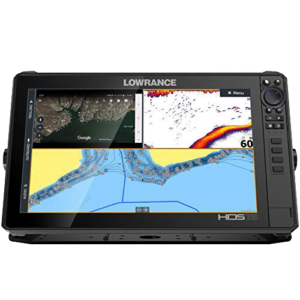 |
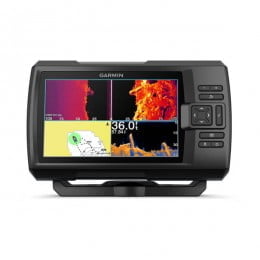 |
 |
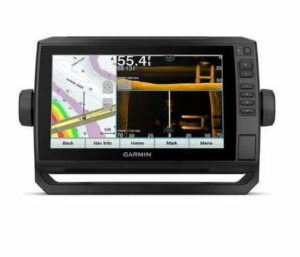 |
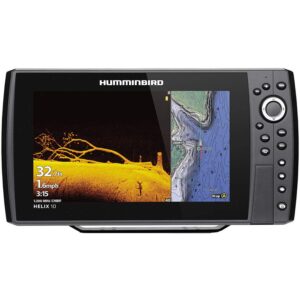 |
| Frequency: Medium and High CHIRP 83/200kHz + 455/800kHz | Frequency: 50/77/200 kHz, CHIRP 83/200 kHz, ClearVu/SideVu 260/455/800 kHz | Frequency: CHIRP 50/83/200/455/800kHz | Frequency: CHIRP 150-240 kHz; ClearVü/SideVü 455 kHz (425-485 kHz), 800 kHz (790-850 kHz), 1000 kHz (940-1100) | Frequency: Sonar: 50/83/200 kHz; CHIRP: 140-200/150-220/180-240 kHz |
| Transducer: Active Imaging 3-in-1 | Transducer: GT52HW-TM* | Transducer: Active Imaging 3-in-1 | Transducer: GT56UHD-TM | Transducer: XNT 9 HW T |
| Screen: Full HD | Screen: HD, backlit | Screen: 800 x 480 backlit WVGA | Screen: N/A | Screen: 256 colour TFT |
| Screen Size: 16" | Screen Size: 7” | Screen Size: N/A | Screen Size: 9" | Screen Size: 10.1" |
| Resolution: 1920 x 1080 pixels | Resolution: 800x480 | Resolution: N/A | Resolution: 400 x 800 pixels | Resolution: 1024 x 600 pixels |
| Backlit: Yes | Backlit: N/A | Backlit: N/A | Backlit: Yes | Backlit: Yes |
| Imaging: 150 ft. Down/Per Side (800 kHz); 300 ft. Down/Per Side (455 kHz) | Imaging: ClearVu 500 ft, SideVu 500 ft (250 ft per side)* | Imaging: N/A | Imaging: N/A | Imaging: DI: 125 ft. (800 kHz), 200 ft. (MEGA), 400 ft. (455 kHz); SI: N/A |
| GPS: Internal, High-Precision | GPS: Internal, high precision | GPS: Internal, high-precision | GPS: N/A | GPS: Internal, High-Precision |
| Maps Included: C-MAP® US Enhanced Inland and Coastal | Maps Included: N/A | Maps Included: C-MAP Contour+ | Maps Included: Worldwide Basemap OR Bluechart G3 U.S. OR Lakevu G3 Canada Lakevu G3 | Maps Included: Humminbird Basemap |
| Max Waypoints: 3,000 (100 routes, 100 tracks/10,000 points) | Max Waypoints: 5,000, 100, 50 (50 000) | Max Waypoints: 3000, 100, 100/10,000 | Max Waypoints: N/A | Max Waypoints: 2,500 (47 routes, 50 tracks/20,000 points) |
| Memory Card Slots: 2 Micro SD | Memory Card Slots: N/A | Memory Card Slots: 1 Micro SD (32 GB) | Memory Card Slots: N/A | Memory Card Slots: 2 SD |
| Max Depth: N/A | Max Depth: N/A | Max Depth: 1000 ft | Max Depth: N/A | Max Depth: N/A |
| Range: N/A | Range: N/A | Range: 300 ft SideScan / 300 ft DownScan | Range: N/A | Range: N/A |
| Best Price (Bass Pro) | Best Price (Amazon) Best Price (Bass Pro) | Best Price (Amazon) | Best Price (Bass Pro) | Best Price (Bass Pro) Best Price (Amazon) Best Price (Bass Pro) Best Price (Bass Pro) |
The HDS-16 LIVE is our top pick for the best saltwater fish finder in 2023. With NMEA 2000 connectivity for marine equipment, a gorgeous (and gigantic) 16” display, and excellent map compatibility, it will help you catch fish and sail the high seas (we’re waxing poetic, but you get the idea).
Lowrance’s HDS LIVE series is one of our all-time favorites for saltwater anglers; this is a durable fish finder that’s compatible with a wide variety of different transducers, including thru-hull transducers and 1KW sonar devices. The hybrid touchscreen and button controls make it easy to use the HDS-16 LIVE in all weather conditions.
We love this fish finder, and we can’t recommend it enough for saltwater anglers; we know you’ll love it too!
The Garmin STRIKER Vivid 7 is the opposite of the HDS-16 LIVE in almost every way—no charts, no NMEA 2000 connection, no touchscreen. Our runner-up earns its title because it’s very good at doing one thing: Helping you catch fish.
You might already have radar and other saltwater fishing features set up. You might not go that far from shore when you fish. When either of those things is the case, you’ll be able to rely on the STRIKER Vivid 7 for its excellent imaging, the wide range of frequencies it supports, and its beautiful backlit display.
Key navigation means you can keep finding fish even when the device gets wet—and you can get the whole package, including the transducer, for an insanely reasonable price. It’s our budget pick and our runner-up for 2023’s best saltwater fish finder.
Lowrance appears twice on our list, and for good reason. The FS 9 is like a more affordable version of the HDS LIVE 16. You get the same high-level networking options with Bluetooth, Wi-Fi, and an NMEA 2000 port. You get the same excellent transducer compatibility, with thru-hull transducers, imaging, and more available.
You even get the same excellent map compatibility—it’s everything we love about the HDS Live 16 in a smaller (and more affordable) package. You even get hybrid navigation with touchscreens and buttons—though the button navigation is a little less sophisticated than the HDS 16’s.
The Elite FS 9 will help you find fish, and it will help you navigate—all for a very affordable price. One of the best saltwater fish finders for anyone looking for a balance between features and affordability.
The ECHOMAP UHD 93sv is pretty incredible. With it, you get some of the clearest imaging available on a fish finder with its over 1 MHz CHIRP transducer. You also get superb networking features—including both NMEA 2000 and NMEA 0183 ports.
Transducer compatibility is there, too, with everything from Panoptix transducers to low CHIRP thru-hull transducers available for the ECHOMAP UHD. With its hybrid touchscreen and button controls, durable construction, and 9” screen—the ECHOMAP UHD has just about everything we’re looking for in a saltwater fish finder.
All the hits are here with the HELIX 10 G3: Mind-blowing imaging, compatibility with low CHIRP transducers, excellent durability, an NMEA 2000 port, and keypad controls that keep the unit operational even when it’s wet. It’s a shame there’s no touchscreen available, but that’s the only knock against an otherwise astounding saltwater fish finder.
The display is gorgeous. The unit is compatible with some pretty powerful thru-hull transducers. There’s excellent chart compatibility and radar compatibility. We’ve been HELIX fans for a long time, and we’re happy to count this unit among our favorite saltwater fish finders in 2023.
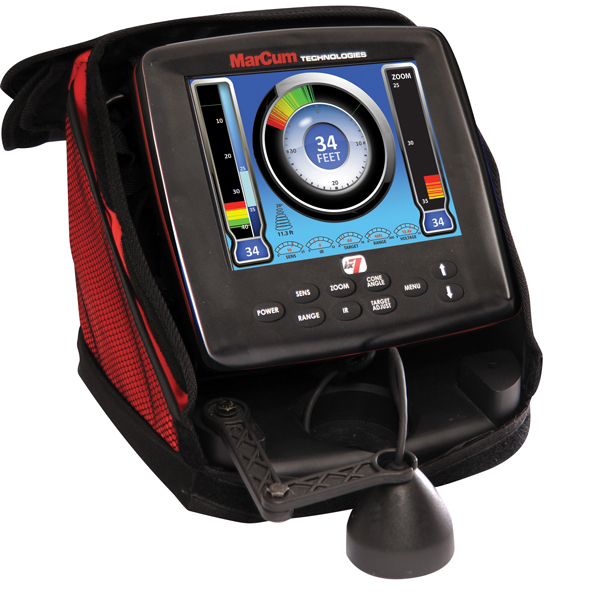
Saltwater fish finders are any fish finders that are designed to help you fish in saltwater—pretty straightforward!
A saltwater fish finder has two basic components: The control head (sometimes called an MFD) and the transducer. The control head is the screen that you interact with, while the transducer is the device that goes into the water; it’s responsible for your fish finder’s sonar.
When you combine the two, you get a display showing where fish appear in the water column. The best saltwater fish finders can find fish over 1000 feet deep.
At their best (and at the highest price points), fish finders are multifunctional devices that act as a hub for your ship’s network of electronics. You can run radar, charts, and much more through a single unit.
Each saltwater fish finder has its own operation instructions, but they all share a few commonalities:
The saltwater fish finders we recommend all offer CHIRP (Compressed High-Intensity Radiated Pulse) sonar, as well as imaging. Traditional sonar takes some time to learn; you interpret the intensity and color of readings to spot fish. Imaging is much easier to use, though less useful while actively fishing—it shows you a detailed image of both fish and structure.
We recommend using imaging to find the perfect fishing spot and then utilizing traditional sonar (once you’ve learned how to read it) to find fish.
The rule of thumb with sonar is that the lower the frequency is, the less precise—but the more range you’ll get. That’s why we recommend low CHIRP sonar for anyone doing saltwater fishing in deep water columns.
We’re not going to give you a full physics lesson here, but here are the basics:
This is a simple but effective strategy—so effective, in fact, that CHIRP sonar was actually a military technology long before it was used for fish finders.
There are several factors to consider when buying any fish finder—but there are a few factors that saltwater anglers, in particular, should pay attention to. Let’s talk about five of them:
Saltwater fishing frequently happens much deeper in the water column than freshwater fishing. For this reason, we highly recommend getting a fish finder and transducer combo that offers low CHIRP (around 50 kHz). This will enable you to find fish 1000 feet or more below your boat.
It’s also important to know that the further your sonar penetrates the water, the narrower your cone angle (and thus your viewing angle) will be. To maximize your chances of finding fish, we recommend getting a transducer that can swap between lower and higher frequencies to give you a balance between range, angle, and precision.
Every angler should have a functional GPS on their vessel—and that goes double for anyone going out on the open sea. All of our recommendations have internal, high-precision GPS. We highly recommend getting at least one chartplotter on your vessel as well—having maps of coastal areas can be a tremendous boon.
Responsiveness is always nice to have on a fish finder. The units we recommend are all incredibly fast, and some of them feature internal storage for even faster loading speeds. When you’re getting new AIS messages at a clip or there’s an emergency, responsiveness is essential—these fish finders provide!
Fish finders have a bit of a learning curve. All of the models we’ve recommended have beautiful graphic user interfaces (GUIs), crystal-clear displays, and intuitive controls—whether through touchscreen, buttons, or both.
The units we’ve included in our list all strike a balance between price and features. Some are more expensive than others, but at their price point, our top five fish finders are hard to beat.
Fish finders with NMEA 2000 or NMEA 0183 compatibility may be able to connect to your VHF radio. The main benefit of this is data sharing—the fish finder can convey water depth, temperature, and even location data to the VHF radio’s screen.
Many of the fish finders we listed in our top 5 can integrate directly with radar systems. Many fish finders can connect to radar via Ethernet. These fish finders can display readings from your radar on your screen, and you can use split screens to show your radar along with sonar and imaging screens. Features like bird mode on your radar can help you find birds—and where there are birds, there are fish.
Much like radar, many of our recommendations can be integrated with GPS systems, especially if those systems connect via Ethernet, Wi-Fi, Bluetooth, or NMEA. The team here at Fish Finder Tech rarely bothers with this, because the internal GPS of the fish finders we recommend is always high-precision—and that more than does the job for us. The feature is there nonetheless if you need it, though!
Excluding the Vivid 7, all of our recommendations feature extensive chart compatibility. This lets you set routes, waypoints, and more—great for vessels with autopilot and excellent for saving your favorite fishing spots. You can even create your own contour charts with these devices, and while that’s typically more useful for fishing in lakes and rivers, it can be handy while saltwater fishing, too.
“Active Imaging” is actually just one brand of imaging sonar—but here, we’re talking about sonar that provides you with imaging functionality so that you can see fish and structure throughout the water column. Depending on your transducer and sonar, you can even get imaging that offers you a 360° view around your boat—perfect for scouting for fish.
You can create your own maps with all of these fish finders, as we mentioned in the “Mapping Options” section. Go off-shore and map a little spot all of your own—then share your maps with your friends and the community at large.
The Lowrance HDS-16 LIVE strikes the best balance between features and price, and it’s our pick for the best saltwater fish finder of 2023. Excellent connectivity, a brilliant, large screen, great imaging, and a wide range of map compatibility make it perfect for saltwater anglers. Don’t just take our word for it, though—try it out for yourself!